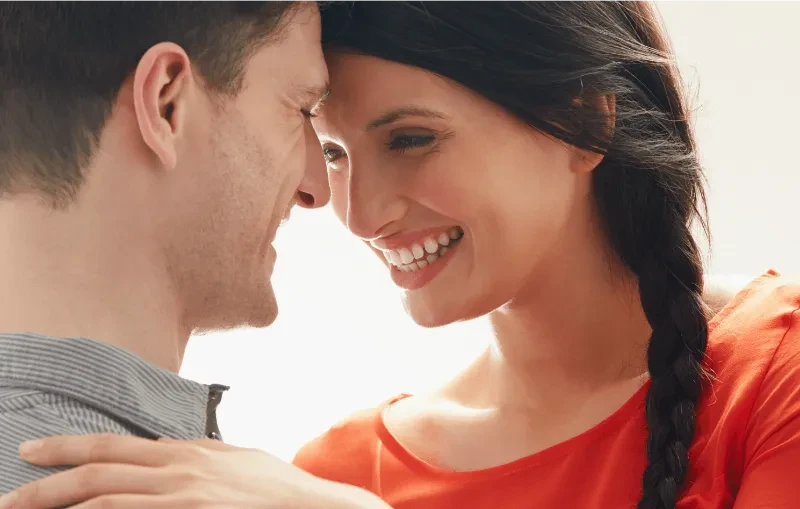- 0 Comments
- Views 54
-
- Understanding Men and Emotional Openness
- Practical Steps to Becoming Vulnerable With Your Partner
- Seeking Help and Support Together
- Communicating Feelings Clearly and Openly
- The Strength in Apologizing: Owning Up to Mistakes
- Navigating the Challenges of Vulnerability in Relationships
- Overcoming the Fear of Rejection
- Dealing with Emotional Baggage
- Why is vulnerability important for emotional intimacy with a man?
- How can I express my feelings to a man without feeling weak?
- What are some ways to create a safe space for vulnerability?
- How can I encourage my partner to be more open and vulnerable?
Understanding Men and Emotional Openness
In a world where the winds of change are reshaping our understanding of masculinity, one key transformation that stands out is the evolving perspective of men towards emotional openness. Gone are the days when stoicism was the hallmark of a “real man.” Today, a growing chorus of voices is championing the idea that true strength lies in the courage to be vulnerable. Men are starting to see the power in expressing emotions, not as a departure from masculinity, but as an enriching addition to it.
Embracing emotional openness allows men to venture into a more authentic version of themselves, fostering relationships grounded in honesty and mutual respect. It’s a journey that challenges age-old norms, urging men to step into a space where they can acknowledge and share their feelings without fear of judgment. This seismic shift is not just about personal liberation; it’s about weaving empathy into the very fabric of society, creating a tapestry where every emotion is valued, and every man has the freedom to express his inner world.
Join me in the next section, where we’ll delve into the practical steps that can bridge the gap between understanding and action, helping you or the man in your life walk the path towards emotional openness with confidence and grace.
Practical Steps to Becoming Vulnerable With Your Partner

Imagine standing at the edge of a cliff, the vast expanse of the ocean before you, and the gentle breeze whispering the promise of a thrilling yet uncertain dive. This is akin to the exhilarating precipice of opening up to your partner. It’s a leap that requires both courage and a bit of know-how. After all, vulnerability is not about reckless emotional exhibitionism; it’s an art, a strategic unveiling of the self that deepens connections and fortifies bonds.
But how does one take that leap without the fear of falling? The answer lies in practical steps that pave a path toward trust and openness. With each measured stride, you’ll learn to shed the armor that guards your innermost thoughts and feelings, fostering an environment where emotional nakedness is not just safe but also immensely rewarding. This journey is about transforming the ordinary into the extraordinary, one honest conversation at a time.
Ready to explore these actionable steps? I invite you to join me as we navigate this path together, ensuring that your dive into the depths of emotional openness is both empowering and uplifting. Stay with me, as up next, we’ll list these transformative steps that will help you embrace vulnerability with poise and purpose.
- Engage in self-reflection to identify personal barriers to vulnerability, such as fears and insecurities rooted in past experiences.
- Openly communicate your struggles with vulnerability to your partner, creating a foundation for mutual understanding and empathy.
- Embrace active listening to show genuine interest in your partner’s feelings, fostering an environment that encourages reciprocal openness.
- Start with sharing smaller personal details to build trust incrementally, then gradually progress to more intimate topics.
- Clearly articulate your needs, desires, and boundaries, which is crucial for establishing transparent and honest communication.
- Be willing to take emotional risks by expressing your feelings, seeking support, and sharing dreams, recognizing that vulnerability is an act of bravery.
- If facing persistent challenges with vulnerability, seek guidance from a therapist or counselor to develop strategies for overcoming these hurdles.
Seeking Help and Support Together
Venturing into the realm of vulnerability can sometimes feel like navigating uncharted waters. When the currents of emotion run deep and the way forward seems unclear, seeking professional help can be the lighthouse guiding you to safe harbor. It’s a proactive step that underlines the commitment to strengthening your bond and deepening your connection.
Embarking on this therapeutic journey together with your partner amplifies its benefits. It sets a powerful precedent of teamwork, showing that you’re both invested in the health of your relationship. In the presence of a professional, you’ll learn new communication techniques, gain insights into each other’s emotional landscapes, and develop the tools necessary to support each other’s growth. This shared experience can become a fertile ground for trust, propelling your relationship towards a future where emotional intimacy flourishes.
As we continue, let’s delve deeper into how you can articulate your feelings with clarity and confidence. The next section will explore effective strategies for communicating feelings clearly and openly, so stay tuned for these valuable insights.
Communicating Feelings Clearly and Openly
Communication is the lifeblood of any thriving relationship, but when it comes to expressing feelings, it requires more than just exchanging words. Effective communication is about conveying your emotions in a way that is both honest and considerate. It’s about painting a picture of your inner world with the brushstrokes of clarity and sincerity, so that your partner not only hears but truly understands your sentiments.
To achieve this, it’s essential to speak from the heart, using “I” statements that reflect your feelings without placing blame or creating defensiveness. Timing, too, is key—choosing a moment when both you and your partner are receptive ensures that your message lands on fertile ground. And remember, communication is a two-way street; it involves as much attentive listening as it does speaking. By nurturing these skills, you’ll find that expressing your emotions becomes not just an act of sharing, but one of uniting.
In the following segment, we’ll explore the power of apology and owning up to mistakes—a critical aspect of vulnerability and communication. Keep reading to uncover the strength that lies in saying “I’m sorry.”
The Strength in Apologizing: Owning Up to Mistakes
Apologizing is an act of humility and courage, a verbal embrace that can heal the bruises of a misunderstanding or a mistake. In the landscape of a relationship, taking responsibility is akin to tending a garden after a storm—necessary for growth and beauty to flourish once again. When you apologize, you’re not just saying “I’m sorry”; you’re acknowledging the impact of your actions and reaffirming the respect and love you hold for your partner.
This gesture of vulnerability is the glue that mends the cracks, allowing trust to be rebuilt on a stronger foundation. It’s about setting aside pride and embracing the transformative power of forgiveness, both giving and receiving it. By owning up to our mistakes, we not only foster a culture of accountability within our relationships but also model the grace of giving second chances.
As we move forward, let’s discuss the challenges that often accompany vulnerability. In the next section, we will navigate the sometimes turbulent waters of being open in relationships, providing insights on how to stay afloat amidst the waves of fear and past hurts.
Navigating the Challenges of Vulnerability in Relationships

The quest for vulnerability in relationships, while noble and essential, is not without its daunting challenges. Like a traveler on a misty path, we may know the direction in which we must go, yet our vision is obscured by the fog of uncertainties and fears. These challenges often manifest as a hesitancy to peel back the layers of our guarded selves, a reluctance rooted in the apprehension of rejection or misunderstanding.
Specific concerns arise, such as the worry that our emotional exposure will be met with indifference or, worse, exploited. The vulnerability requires the courage to reveal our truest emotions — to lay bare our hopes, dreams, and insecurities. It’s a tightrope walk between maintaining our individuality and merging our emotional landscapes with someone else’s. However, confronting these challenges is a testament to the strength and resilience inherent in the human spirit and the pursuit of profound connection.
Stay with me as we venture into the heart of these challenges. Up next, we’ll tackle the fear of rejection, offering insights and strategies to overcome this common hurdle on the path to emotional intimacy. It’s a journey worth taking, and you don’t have to do it alone.
Overcoming the Fear of Rejection
The fear of rejection is a shadow that can loom over even the sunniest of relationships, casting doubt where there should be certainty. It’s a primal concern, wired into our very being, rooted in the evolutionary need for belonging and acceptance. However, overcoming this fear is critical to fostering vulnerability and, in turn, emotional intimacy with a man.
One key insight is recognizing that rejection, should it occur, does not reflect your worth as a person or the value of your emotions. It’s also helpful to reframe vulnerability as a strength—not a liability—by viewing it as an opportunity for growth and deeper connection. Building resilience through positive self-talk and affirmations can fortify your spirit, making it easier to open up.
As we move to the next section, we’ll examine how to handle the heavy luggage of emotional baggage that can weigh down a budding relationship. Join me to learn how to unpack these burdens and enjoy the liberating journey of love and vulnerability.
Dealing with Emotional Baggage
Emotional baggage, the silent stowaways from our past, can surreptitiously weigh down the present, challenging the buoyancy of a new relationship. Addressing past traumas is akin to a delicate archaeological dig—unearthing artifacts of the heart with care, seeking to understand their place in your history without allowing them to define your current narrative.
In the context of a new relationship, it’s essential to approach this baggage not as insurmountable blockades but as milestones of your personal journey that have contributed to your depth and resilience. Communicating these aspects of your past with a partner should be a process marked by patience and mutual support. It’s not about unloading your history onto someone else but rather integrating it as a shared chapter of growth and healing.
With these reflections in mind, let’s pivot to exploring why vulnerability is crucial for emotional intimacy. Understanding its importance is the next step in our journey, so continue reading to unlock the essence of vulnerability with a man.
Why is vulnerability important for emotional intimacy with a man?
Vulnerability is the gateway to emotional intimacy; it allows a man to see your true self, fostering a profound connection that’s rooted in authenticity, trust, and unconditional acceptance.
How can I express my feelings to a man without feeling weak?
Express your feelings with confidence by framing them as your personal truths, which reflect strength and self-awareness, not weakness.
What are some ways to create a safe space for vulnerability?
Create a safe space for vulnerability by establishing trust, actively listening, and validating each other’s feelings without judgment or interruption.
How can I encourage my partner to be more open and vulnerable?
Encourage openness by being vulnerable yourself, creating a non-judgmental atmosphere, and reinforcing the security within your relationship.







